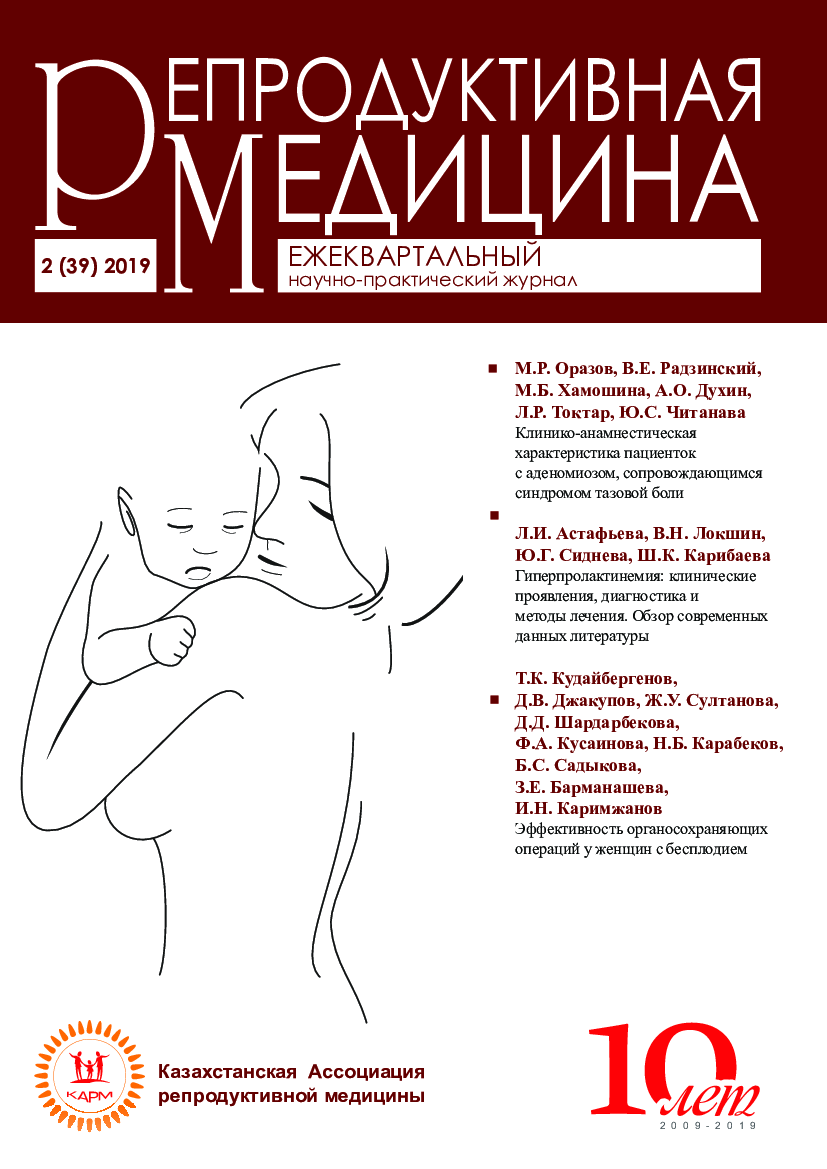Study of the possibilities of improving the results of protocols of АRT in patients with poor reproductive prognosis
Keywords:
controlled ovarian stimulation, corinollitropin-alpha, Ca ionophore, IVF, ICSIAbstract
Purpose of the study. Study of the effectiveness of the use of Ca ionophore in IVF - ICSI protocols in patients with a poor
reproductive prognosis.
Materials and methods. A study was conducted of the effectiveness of the method of oocyte activation in ECO-ICSI
protocols in patients after at least one unsuccessful attempt of ART. The protocols of controlled ovarian stimulation were
similar in bouth grops. Effectiveness was estimated on the basis of embryological ( fertilization rate, embryo cleavage,
blastulation rate) and clinical indicators (pregnancy rate).
Results. The use of calcium ionophore at the time of the ICSI procedure allows to improve the percentage of oocyte
fertilization, the percentage of cleavage, the percentage of blastulation. This, in turn, has increased the pregnancy rate in the
IVF-ICSI treatment.
Conclusion Improvement of embryological parameters allowed to significantly improve the results of the frequency of
pregnancy in women of older reproductive age with a reduced prognosis for the occurrence of pregnancy.
References
Palermo GD, Neri QV, Takeuchi T, Rosenwaks Z. ICSI: where we have been and where we are going. Semin Reprod Med 2009; 27:191–201.
Flaherty SP, Payne D, Swann NJ, Mattews CD. Aetiology of failed and abnormal fertilization after intracytoplasmic sperm injection. Hum Reprod 1995; 10:2623–2629.
Flaherty SP, Payne D, Matthews CD. Fertilization failures and abnormal fertilization after intracytoplasmic sperm injection. Hum Reprod 1998; 13(Suppl. 1):155–164.
Liu J, Nagy Z, Joris H, Tournaye H, Smitz J, Camus M, Devroey P, Van Steirteghem A. Analysis of 76 total fertilization failure cycles out of 2732 intracytoplasmic sperm injection cycles. Hum Reprod 1995; 10:2630–2636.
Rawe VY, Olmedo SB, Nodar FN, Doncel GD, Acosta AA, Vitullo AD. Cytoskeletal organization defects and abortive activation in human oocytes after IVF and ICSI failure. Mol Hum Reprod 2000; 6:510–516.
Swain JE, Pool TB. ART failure: oocyte contributions to unsuccessful fertilization. Hum Reprod Update 2008;14:431–446.
Yanagida K. Complete fertilization failure in ICSI. Hum Cell 2004; 17:187–193.
Yanagida K, Katayose H, Yazawa H, Kimura Y, Sato A, Yanagimachi H, Yanagimachi R. Successful fertilization and pregnancy following ICSI and electrical oocyte activation. Hum Reprod 1999; 14:1307–1311.
Yanagida K, Morozumi K, Katayose H, Hayashi S, Sato A. Successful pregnancy after ICSI with strontium oocyte activation in low rates of fertilization. Reprod Biomed Online 2006; 13:801–806.
Tesarik J, Mendoza C, Greco E. The activity (calcium oscillator?) responsible for human oocyte activation after injection with round spermatids is associated with spermatid nuclei. Fertil Steril 2000; 74:1245–1247.
Parrington J, Davis LC, Galione A, Wessel G. Flipping the switch: how a sperm activates the egg at fertilization. Dev Dyn 2007; 236:2027–2038.
Kashir J, Heindryckx B, Jones C, De Sutter P, Parrington J, Coward K. Oocyte activation, phospholipase C zeta and human infertility. Hum Reprod Update 2010; 16:690–703.
Ajduk A, Malagocki A, Maleszewski M. Cytoplasmic maturation of mammalian oocytes: development of a mechanism responsible for sperm-induced Ca2+ oscillations. Reprod Biol 2008; 8:3–22.
Tesarik J, Mendoza C. In vitro fertilization by intracytoplasmic sperm injection. Bioessays 1999; 21:791–801.
Tesarik J, Rienzi L, Ubaldi F, Mendoza C, Greco E. Use of a modified intracytoplasmic sperm injection technique to overcome sperm-borne and oocyte-borne oocyte activation failures. Fertil Steril 2002; 78:619–624.
Borges E Jr, de Almeida Ferreira Braga DP, de Sousa Bonetti TC, Iaconelli A Jr, Franco JG Jr. Artificial oocyte activation using calcium ionophore in ICSI cycles with spermatozoa from different sources. Reprod Biomed Online 2009a; 18:45–52.
F. Vanden Meerschaut , D. Nikiforaki, S. De Gheselle, V. Dullaerts, E. Van den Abbeel, J. Gerris, B. Heindryckx, and P. De Sutter Assisted oocyte activation is not beneficial for all patients with a suspected oocyte-related activation Deficiency Human Reproduction, Vol. 27, No.7 pp. 1977–1984, 2012.
Additional Files
Published
How to Cite
Issue
Section
License
The articles published in this Journal are licensed under the CC BY-NC-ND 4.0 (Creative Commons Attribution – Non-Commercial – No Derivatives 4.0 International) license, which provides for their non-commercial use only. Under this license, users have the right to copy and distribute the material in copyright but are not permitted to modify or use it for commercial purposes. Full details on the licensing are available at https://creativecommons.org/licenses/by-nc-nd/4.0/.




